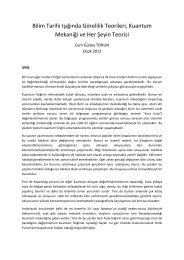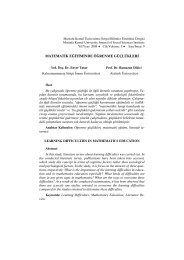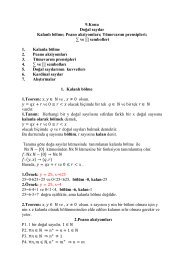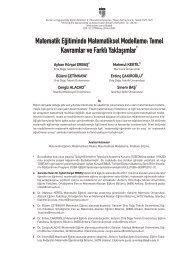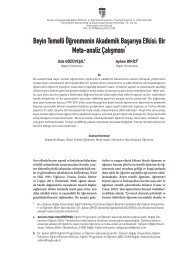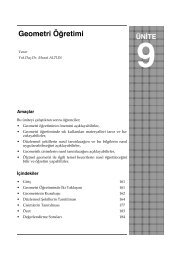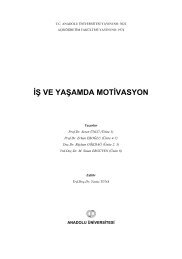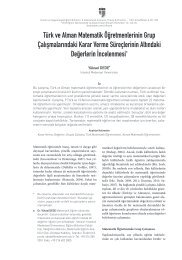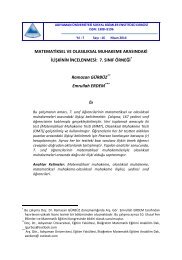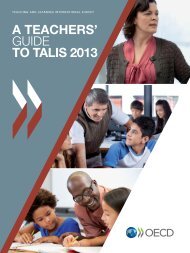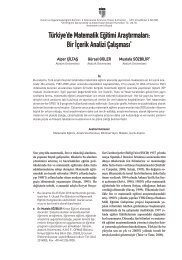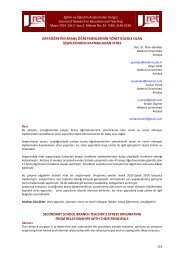Ufuk-U_niversitesi-SBE-Dergisi-S-ayı-5-kopya
Ufuk-U_niversitesi-SBE-Dergisi-S-ayı-5-kopya
Ufuk-U_niversitesi-SBE-Dergisi-S-ayı-5-kopya
Create successful ePaper yourself
Turn your PDF publications into a flip-book with our unique Google optimized e-Paper software.
wider variety of strategies with a higher frequency rate than bilingual individuals (Nayak etal, 1990) which is also the case in the present study. The present study showed thatmultilinguals practise out language learning strategies remarkably more often than bilingualindividuals; particularly direct strategies and memory strategies for which significance wasfound. Researchers have investigated several reasons for the difference in language learningstrategies and have linked the difference to the mutlinguals’ language processing systembeing different due to the acquisition of an additional language (Cenoz, 2003; Cenoz &Genesee, 1998; Herdina & Jessner, 2002). Moreover, differences in language awareness(Herdina & Jessner, 2002), ability to reach to two linguistic systems (Joaristi et al., 2009) anddifference in the amount of language learning experience (Cenoz, 2003) have been purposedas other reasons. According to Nayak et al. (1990) who conducted a study in which theyanalyzed the strategies that multilingual subjects used the reason for multilinguals’ frequentuse of strategies is their “greater flexibility in switching strategies” (p. 242).Apart from the analysis of the all the construct of the SILL, the present study alsoinvestigated each of the constructs which lead to the conclusion that bilingual andmultilingual individuals significantly differ in the use of direct strategies, which deal with thenew language acquired, memory strategies, which are used for remembering and retrievingnew information and a marginal significant effect of cognitive strategies, which are used forunderstanding and producing the language. Although the study of Sung (2011) in whichChinese language learners’ strategies were investigated pointed out that learners who acquiredtwo or more languages use metacognitive, social, affective and cognitive strategies morefrequently, the current study did not find a statistical difference in these strategies and itscategory (indirect strategies). It is important to highlight that the reason for the significantdifference in direct strategies can be based on the amount and experience of language learningwhich gives an advance to multilingual individuals. Similar interpretations can be made forthe use of memory strategies by stating that bilingual language learners pose less languageawareness and awareness of the importance of memorizing in language learning.As for the main effect of cognitive strategies, it is thought that the differences inlanguage knowledge, processing and awareness lead to the assumption that these differencesfoster cognitive advantages for multilinguals which assist them to be better language learners(Cenoz & Jessner, 2000; Cook, 2003; Herdina & Jessner, 2002). Therefore, these differencesmay be the reason for the difference in cognitive strategies.68





